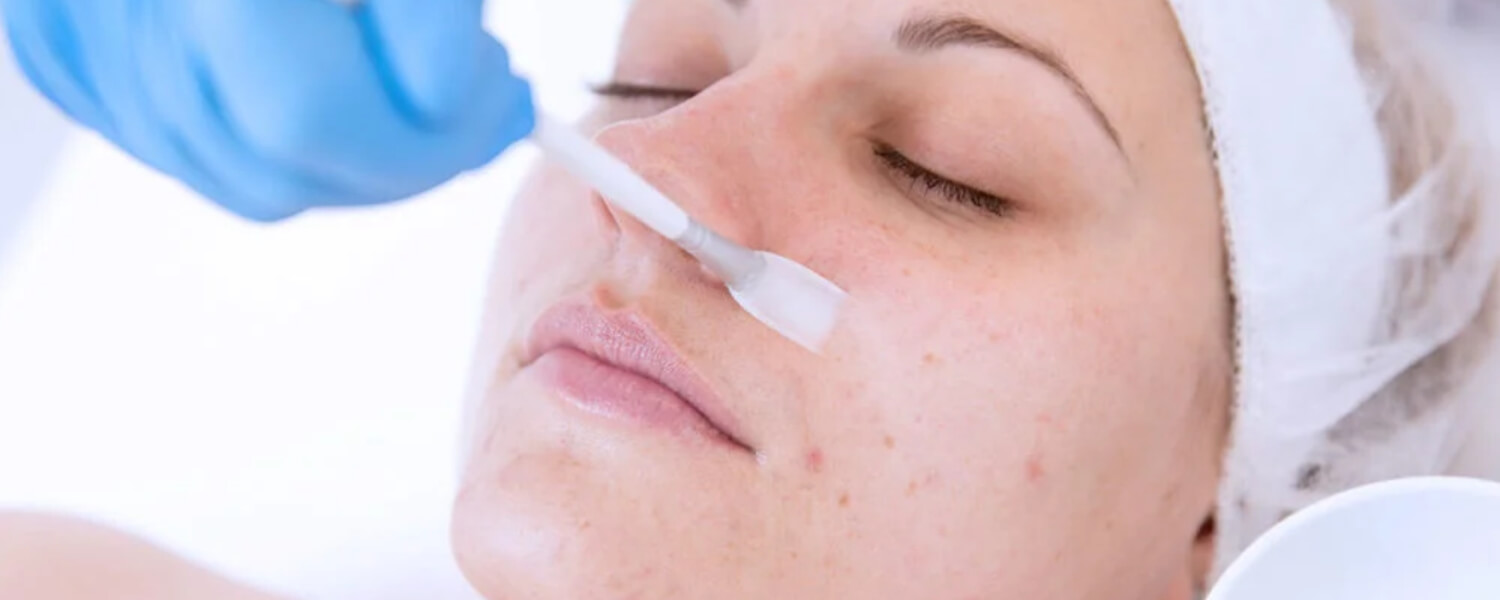A medical chemical peel, also known simply as a chemical peel, is a cosmetic procedure performed by dermatologists or trained medical professionals to improve the texture and appearance of the skin. It involves the application of a chemical solution to the skin’s surface, which causes controlled chemical exfoliation and peeling of the outermost layers of the skin. This process helps remove damaged or aged skin cells and stimulates the growth of new, healthier skin.
Chemical peels are used to address a variety of skin concerns, including:
- Acne: Chemical peels can help reduce acne breakouts and improve the appearance of acne scars.
- Fine Lines and Wrinkles: They can diminish the appearance of fine lines and wrinkles, especially on the face.
- Uneven Skin Tone: Chemical peels can even out skin tone, reducing the appearance of sunspots, age spots, and melasma (skin discoloration).
- Texture Irregularities: They can improve skin texture, making it smoother and more even.
- Skin Dullness: Chemical peels can restore a healthy glow to the skin by removing dead skin cells.
- Hyperpigmentation: They can be used to treat certain types of hyperpigmentation.
There are different types of chemical peels available, each with varying levels of intensity:
- Superficial Peels: These peels use mild acids (such as alpha hydroxy acids or beta hydroxy acids) to exfoliate the outermost layer of skin. They are often used to improve skin texture and provide a mild rejuvenation with little to no downtime.
- Medium Peels: Medium-depth peels penetrate deeper into the skin and typically use trichloroacetic acid (TCA). They can address more pronounced wrinkles, acne scars, and pigment irregularities. Recovery time is longer than with superficial peels.
- Deep Peels: Deep peels use strong acids, such as phenol, to deeply penetrate the skin. They are effective for treating severe wrinkles, deep scars, and significant skin damage. Recovery can take several weeks, and they are usually only performed once or twice in a lifetime.
The choice of the specific chemical peel and its concentration depends on the individual’s skin type, concerns, and the desired level of improvement. The procedure is usually performed in a clinical setting, and the skin may appear red, swollen, and peeling for a few days to several weeks afterward, depending on the depth of the peel.
It’s crucial to consult with a qualified dermatologist or medical professional before undergoing a chemical peel, as they can assess your skin and recommend the most appropriate type and strength of peel for your specific needs. They will also provide guidance on pre-peel and post-peel care to ensure a safe and effective outcome.


